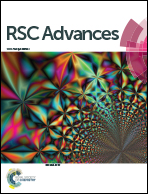Recent progress in quantum dot based sensors
Abstract
This review summarizes the recent progress in quantum dot (QD) based sensors used for the photoluminescent detection of a variety of species in vitro and in vivo. New trends in using these nanomaterials for sensing applications are highlighted.


 Please wait while we load your content...
Please wait while we load your content...